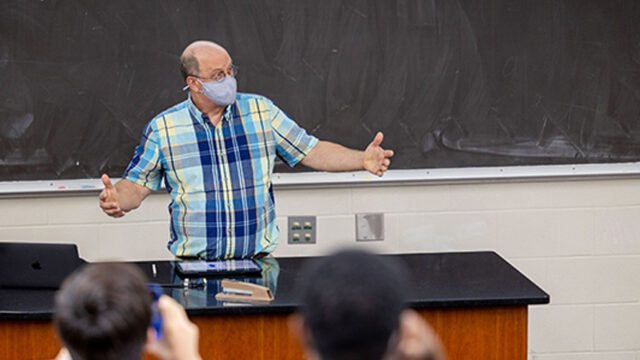Q: What does the Bible say about the resurrected body of the righteous? The Bible shows elements of similarity and difference with our […]

Q: What does the Bible say about the resurrected body of the righteous?
The Bible shows elements of similarity and difference with our present bodies. The difference could not be absolute, otherwise it would not be a resurrection. In this topic our model will be Jesus Christ, who was resurrected with a glorified body. At His coming He will “transform the body of our lowly condition into conformity with His glorious body” (Phil. 3:21, NASB).*
A physical body
The resurrected body is not a disembodied soul, but a physical body. After Christ’s resurrection Mary touched and firmly embraced Him (John 20:16, 17). He let the disciples touch His hands, side, feet, His bones and flesh; He was not a ghost (Luke 24:39; John 20:20). He was present in His own glorified body. The physical nature of Christ’s resurrected body was witnessed by many others. In one case He appeared to the 11 disciples on a mountain (Matt. 28:16, 17) and to “more than five hundred brothers and sisters at one time” (1 Cor. 15:6, NASB; cf. Acts 1:3; 13:31). Not everyone saw Christ, but the time is coming when every eye will see Him coming in the glory of His resurrected body (Rev. 1:7).
A spiritual body
Jesus’ resurrected body was not exactly as His earthly body; an element of discontinuity was also present. Mary heard His voice and at first did not recognize Him (John 20:15, 16). Two disciples walked with Him to Emmaus and did not recognize Him until Jesus blessed and broke the bread (Luke 24:30, 31). At that moment God opened their incredulous eyes. Since Christ was recognized by the disciples, we will be able to recognize Him and our loved ones. His appearances also indicate a change in the body of Christ. He appeared to the disciples and then unexpectedly and in a supernatural way left them (John 20:19, 26; Luke 24:31). Christ now belongs to the heavenly realm. The phrase “spiritual body” does not designate an immaterial being, but a person who is no longer in the sphere of the present age; a body that permanently belongs to the heavenly realm of glory. Therefore, Christ’s appearances to the disciples and others were supernatural manifestations of His presence on earth. We need not assume that His resurrected body was capable of passing through solid walls. He appeared whenever and wherever He thought it necessary. Walls were not barriers He had to overcome.
A transformed body
Our resurrected body is not formed by the exact same particles that formed our earthly body (1 Cor. 15:35-38). It is the character of a person that is preserved and brought back to life in bodily existence. At the resurrection the extraordinary and mysterious will happen. The perishable will be raised imperishable. What was planted in dishonor will be raised in glory; what was sown in weakness will be raised in power (1 Cor. 15:42, 43), and the mortal will be dressed in immortality (verse 53; John 8:51). Our bodily human existence will be perpetually free from the damage sin caused to our bodies and nature. Although our bodies will be transformed, food will be compatible with that glorified body, as it was with Jesus (Luke 24:41-43; Acts 10:41). We shall eat from the tree of life (Rev. 22:2) and from the fruits of the land (Isa. 65:21). We know that gender distinctions (male and female), established at creation, will be preserved, although we, like the angels, will not procreate (Matt. 22:30). In the new earth our vision will be perfect, enabling us to recognize our loved ones in the splendor of their resurrected bodies.
*Scripture quotations marked NASB are from the New American Standard Bible, copyright © 1960, 1971, 1977, 1995, 2020 by








